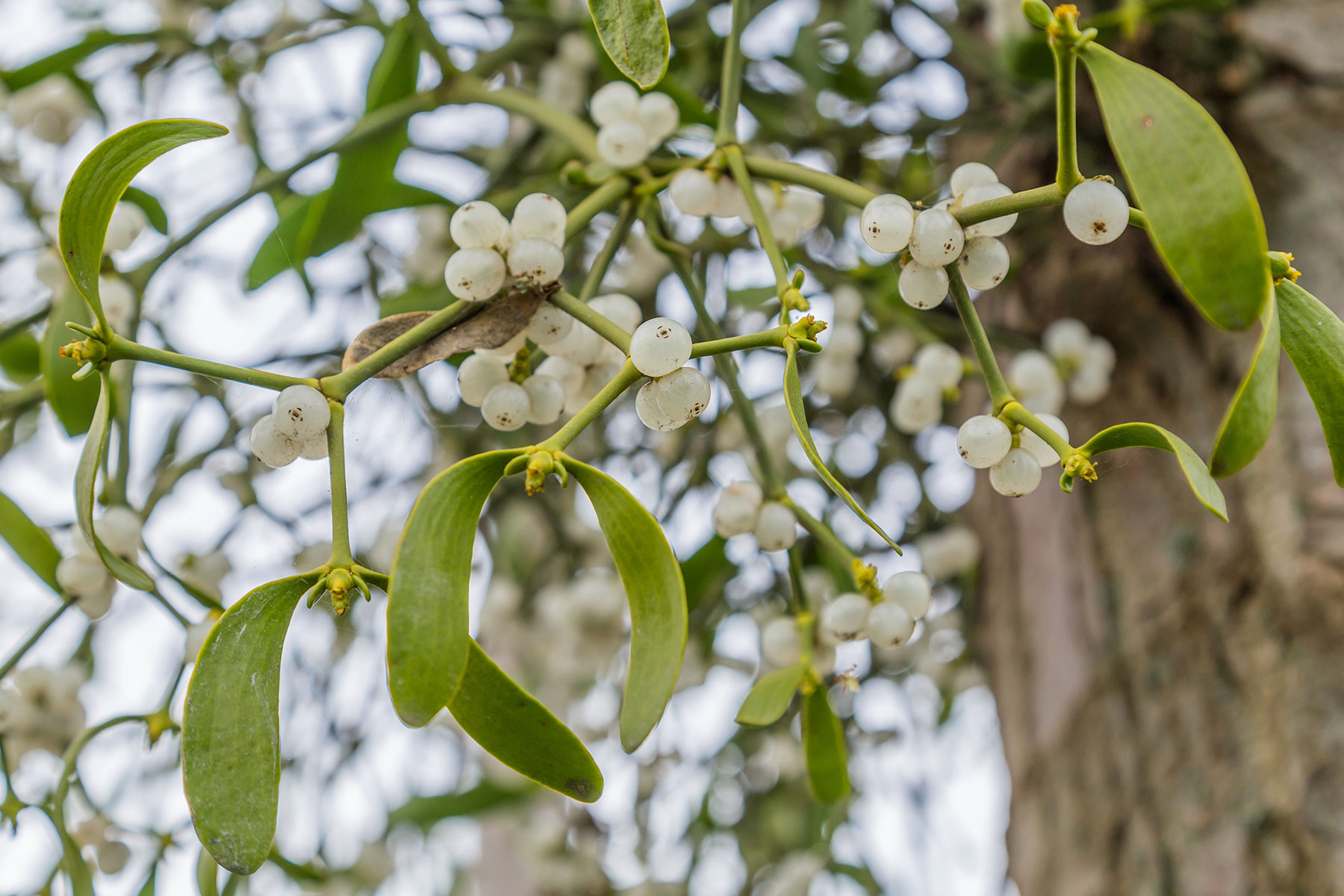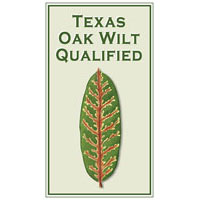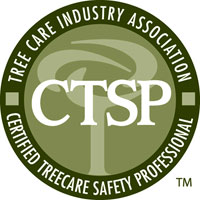As the Christmas season approaches, the familiar sight of mistletoe adorning doorways and ceilings becomes a common part of our festive decor. While mistletoe has long been associated with holiday cheer and a great way to sneak a smooch with your favorite someone, its presence on our trees can have detrimental effects. In this article, we will explore what mistletoe is, its impact on trees, and why it’s crucial to consider its removal for the health of our beloved green companions.
Mistletoe is a unique parasitic plant that attaches itself to various tree species. Mistletoe is characterized by its green leaves and white berries, making it a distinctive addition to the winter landscape when our deciduous trees have shed their leaves, but the mistletoe remains green and vibrant. While it may seem harmless and festive, mistletoe’s relationship with trees can be more complex than meets the eye.
Mistletoe establishes a connection with its host tree by penetrating its branches (and/or trunks) and drawing valuable nutrients and water from the host. While this relationship might seem symbiotic, mistletoe can be detrimental to the host tree over time. Our West Texas trees already struggle with limited water and nutrients; a parasite like mistletoe robs them of these critical, life giving resources. The mistletoe weakens the tree, leading to reduced growth, increased vulnerability to diseases and pests, and even premature death for the host.
When it comes to managing or removing mistletoe, there are a few options that are most comon, but one only that is most effective. Less effective options would include chemical sprays and wraps. Chemical sprays have to be very targeted to the actual mistletoe itself. Overspray onto desirable plant tissues can cause very undesirable results. These sprays are marginally effective at best. Wrapping a mistletoe infected branch or trunk with a dark plastic type material with the intent to rob the mistletoe of sunlight and hopefully killing the plant rarely works. Most of the time, the wrap material degrades before the mistletoe dies or the mistletoe simply grows out and around the edges of the wrap.
Mechanical removal of the mistletoe plant from the host tree is the most simple and effective means of management/removal. In most instances, the infected branch can simply be pruned off the host tree, which completely removes the mistletoe and its embedded root system. There are situations where the mistletoe might be growing out of the host tree’s trunk or other substantially important limb, which prohibits complete removal. In these situations, the best option is to prune off the actual mistletoe plant back to the bark of the host tree. The key to long term management in these situations is to simply keep the mistletoe plant pruned back each year, preventing the formation of berries, which keeps the mistletoe from spreading to other parts of the host tree.
Take a moment during the winter months to step outside and look up through the canopy of your deciduous tree that should not have any green leaves during the winter dormant season. If you see a clump of green leaves, then your tree most likely has a mistletoe infection. If you aren’t sure if you have a mistletoe problem or you are sure, then reach out to your favorite ISA Certified Arborist to develop a mistletoe management/removal game plan specific to your tree’s needs.
Mistletoe left unmanaged will spread throughout the canopy of the host tree and likely to nearby trees from the transfer of the berries by birds, squirrels, or other tree going critters. As discussed previously, mistletoe is a parasite to your tree(s) and can lead to significant long term consequences if left unchecked.
The good news is that mistletoe management/removal is relatively simple and very effective if the parasitic infection is caught early before it has spread throughout the entire tree canopy. The winter season is by far the best time to assess and implement an effective mistletoe management/removal strategy.
Take a moment to look up and view the canopy of your trees today. If you suspect you might have a mistletoe infection, then don’t wait to take action! If you aren’t sure if you have mistletoe and need help assessing your trees, then please take a moment to call our office at 806-441-7722 today. We will gladly send out one of our ISA Certified Arborists to help you navigate your tree care journey.






